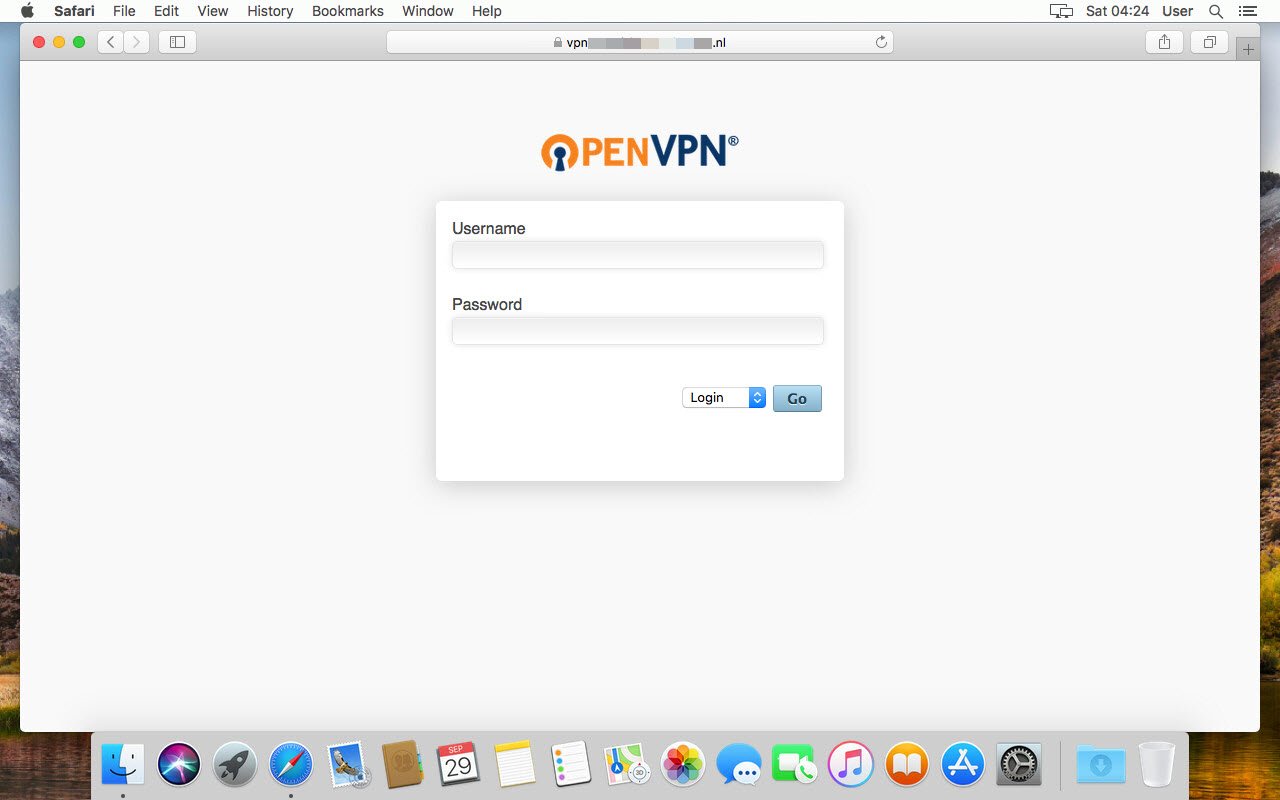

Tunnelblick will also prompt you again for your administrator password, since security-sensitive files have been modified.
#Openvpn client for mac os x how to
I’ll assume that you know how to do this, or you wouldn’t be here.
#Openvpn client for mac os x install
Install Tunnelblick, and create your OpenVPN config.Here’s how to use it with the excellent OpenVPN client Tunnelblick:

The script is provided on the Openvpn-users mailing list, by Ben Low. The best solution is to run an “up” script as part of the OpenVPN connection process, which will handle the necessary configuration for you. The problem is discussed further on nicholas riley’s blog, though his solution, a python script, a) is complicated to install, and b) did not actually work for me once installed, though I didn’t dig deep enough to understand why. These together can manage 10.4’s new DNS configuration system, and set the tap device to obtain an address via DHCP. The solution? A combination of two tools: ipconfig and scutil. However, this does not work on a Mac, because Mac software (even down to ssh and ping) doesn’t use /etc/nf under OS X 10.4… Oops. Consult your distro’s openvpn documentation for more information. On a linux system, you could, for example, incorporate these into /etc/nf. When you connect via OpenVPN, it is the responsibility of the client to process pushed dhcp-options (including the DNS server rules), and do something useful with them.

Write to TUN/TAP : Input/output error (code=5) The Solution Perhaps you even see a large number of errors of the type: You’ve tried connecting, and it just doesn’t seem to work. Your OpenVPN server will be serving DHCP, as well as pushing down DNS server addresses. You want to run an OpenVPN Client on Mac OS X.


 0 kommentar(er)
0 kommentar(er)
